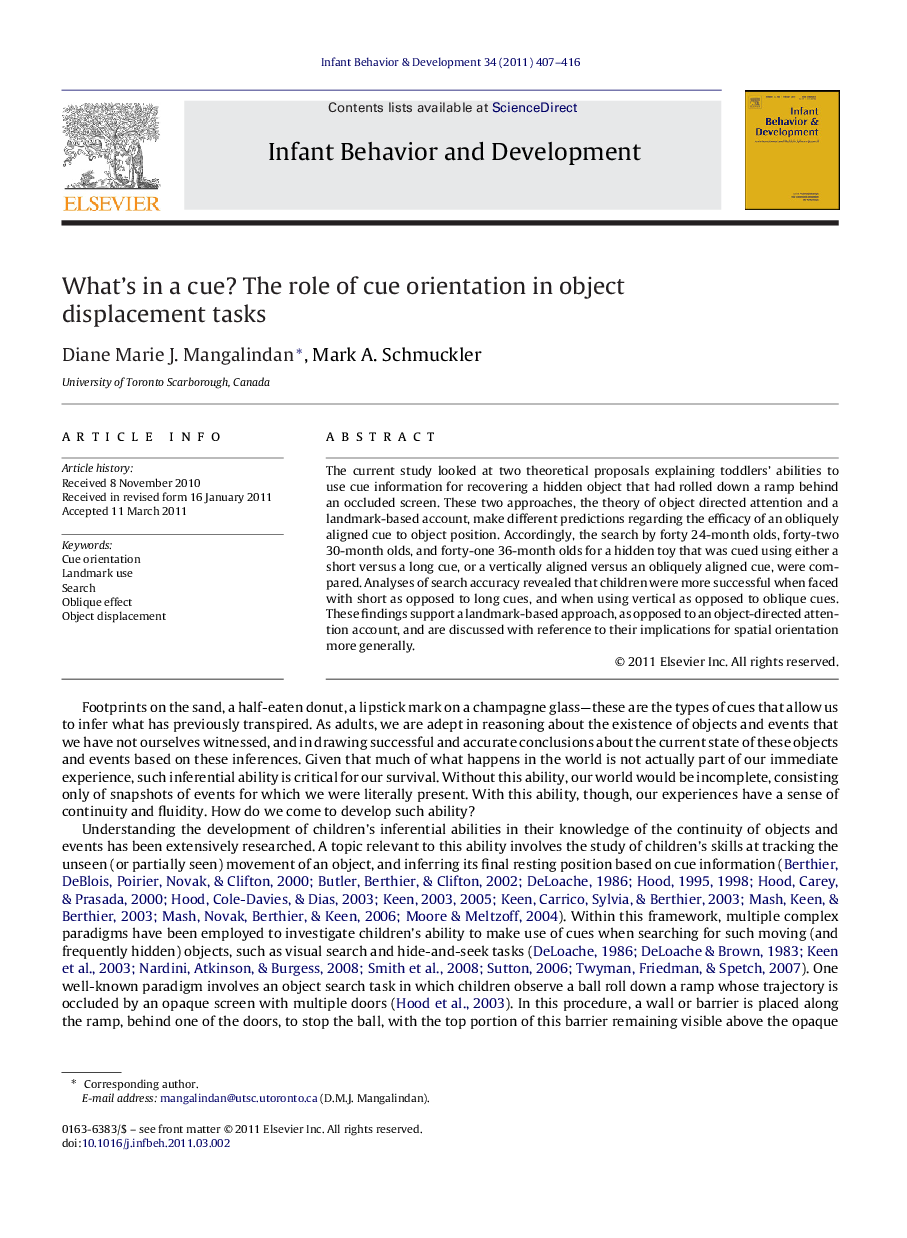| Article ID | Journal | Published Year | Pages | File Type |
|---|---|---|---|---|
| 917315 | Infant Behavior and Development | 2011 | 10 Pages |
The current study looked at two theoretical proposals explaining toddlers’ abilities to use cue information for recovering a hidden object that had rolled down a ramp behind an occluded screen. These two approaches, the theory of object directed attention and a landmark-based account, make different predictions regarding the efficacy of an obliquely aligned cue to object position. Accordingly, the search by forty 24-month olds, forty-two 30-month olds, and forty-one 36-month olds for a hidden toy that was cued using either a short versus a long cue, or a vertically aligned versus an obliquely aligned cue, were compared. Analyses of search accuracy revealed that children were more successful when faced with short as opposed to long cues, and when using vertical as opposed to oblique cues. These findings support a landmark-based approach, as opposed to an object-directed attention account, and are discussed with reference to their implications for spatial orientation more generally.
► We compared two theories and a landmark-based view better accounts for the findings. ► First evidence to date that cue orientations influence children's search. ► Older children better in using cues that vary in effectiveness for object location. ► Short, relative to long, cues are more effective for object retrievals.
